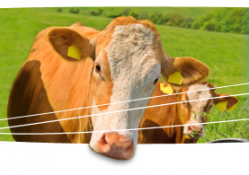Dairy sector reveals greenhouse gas progress

In Parma, a reporting session of the Global Dairy Agenda for Action on Climate Change (GDAA), participants shared results showing that, according to the IDF, the sector continued to fulfill its commitments to cut greenhouse gas (GHG) emissions from 2009-2011.
Signed at the World Dairy Summit in Berlin in September 2009, the GDAA is a statement of commitment by participants throughout the global dairy supply chain to tackle climate change - by reducing methane, nitrous oxide, carbon dioxide and other emissions.
Greenhouse gas assessment
Notable achievements since late 2009, according the new GDAA report, include the publication and implementation of a common standard to assess the carbon footprint of milk and dairy products, and the publication of an international life-cycle assessment (LCA) methodology.
In addition to emissions reduction targets by stakeholders across the supply chain, the GDAA report also said that the dairy industry had also established practical tools to make GHG emissions easier to understand and manage across the supply chain.
Richard Doyle, president of the IDF, said: “Our progress supports the conviction that dairy deserves to be a preferred source of nutrition.
He added: “By addressing the increasing the efficiency of milk and dairy production, we address the increasing demand for food on a global basis, and in particular protein demand.”
Doyle said that, within 2 years, there had been widespread uptake “from many countries around the world”, where the IDF’s sustainability website details 400 case studies from 50 countries across the entire supply chain.
Other sustainability factors
The IDF said the reporting session showed both that the dairy sector continued to fulfill its commitment to action and that it had support from other global agricultural organisations.
Donald Moore, executive director of industry leaders' trade body, Global Dairy Platform, said: “The dairy sector has demonstrated that it is committed to the reduction of greenhouse gases in a way that is economically viable, socially responsible and environmentally sound.
“We produce food more efficiently than we did five or ten years ago and we can see ways to continuously improve that production,” Moore said.
He added that the first 2 years of the GDAA provided a basis for a plan to help reduce carbon emissions.
Moore said: “In addition to continuing this effort, over the next 2 years we will assess the potential for action in other sustainability factors, such as water use, management and quality issues.”
The next progress report will be published during the 2013 IDF World Dairy Summit in Japan.





